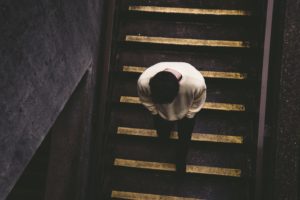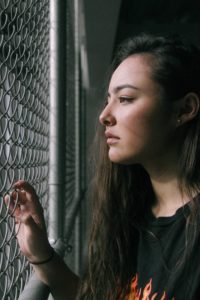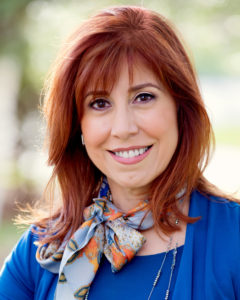 Depression’s the Worst!
Depression’s the Worst!
It drains your energy, robs you of enjoyment of ANYTHING, isolates you and makes you feel like no one in the entire world cares. Makes you feel like you’re a burden on the people you know. Makes you feel achey and lethargic.
Shuts down your brain so you can’t think. You can’t do your job. Can’t take care of responsibilities. Can’t function. You just can’t do. Or care.
What you do feel is worthless, hopeless, burdensome, guilty. It can even make you want to stop existing. To disappear. To die.
If all this sounds like you, you’re not alone. Not by a long shot.
Disability Plagues Depressed People
Did you know depression is the #1 cause of disability in this country? Ahead of arthritis, stroke, substance abuse, and COPD.  Does that surprise you?
Does that surprise you?
It should.
Because treatment hasn’t been as effective as we wish. But more about that later.
This is why so much you hear from psychiatrists, drug companies … and why social media refers to the epidemic of depression.
Well, in the interest of learning more about depression to find more effective treatment, a team of researchers set out on a quest.
Their idea was to find out how to “define” depression. To tease it into types based on the connections between various brain cell (neuron) clusters and how they behaved. Up till now, psychiatrists, psychologists, and neuroscientists have used the DSM V criteria to diagnose various subtypes of depression.
While this has been a great help, it doesn’t address brain changes and characteristics for various psychiatric disorders. But, neuroscientists need specific physiologic details that can be measured by machines rather than by subjective symptom reports and observation.
Brain Circuit Study about Depression
The study, funded by Brain and Behavior Research Foundation and the National Institute of Mental Health, used brain scans to study connections in the brain in a variety of both depressed and healthy subjects.
The study, led by Connor Liston, MD, PhD, included neuroscience research teams from five prominent universities.
To rethink the general approach to diagnosis and treatment, they set out to identify new subtypes of depression. These were based on  dysfunction in mood-related brain circuits. If they could understand more about the neuronal connections in the brain during various types of depression, maybe they could learn more about what type of treatment would be successful in each type.
dysfunction in mood-related brain circuits. If they could understand more about the neuronal connections in the brain during various types of depression, maybe they could learn more about what type of treatment would be successful in each type.
This could potentially eliminate the “trial and error” approach that has plagued psychiatric treatment the last fifty years. Patients wouldn’t have to take a medication for 8-12 weeks to find out if it helps.
They made use of brain scans of these subjects periodically, and studied the differences in their scans. They also interviewed them each to correlate the symptoms of a given patient with that patient’s brain scan.
What they discovered in simple terms, is that these brain scan images fell into four different categories. With four different clusters of symptoms… and of those four there were two primary differences.
Anhedonia vs. Anxiety
Two of the four were dominated by severe anxiety, and the other two were dominated by anhedonia, or loss of interest or pleasure in things they previously enjoyed.
Those in the severe anxiety segment also tended to lose weight, and reported difficulty sleeping. While those two in the anhedonia  segment tended to gain weight and crave carbohydrates, as well as slept long hours, such as 19 hours at a time.
segment tended to gain weight and crave carbohydrates, as well as slept long hours, such as 19 hours at a time.
You can see that though all four groups were diagnosed with depression, that the two groups of subtypes had almost opposite symptoms.
Two subtypes
To be certain they’d derived these four groupings correctly, they did the same scans and interviews with another set of people in a different city with different scanners, and different interviewers.
The results verified their findings. 4 groups. 2 main categories: one dominated by anxiety and the other by anhedonia.
If any of this is sounding familiar to you, there’s good reason.
4 Subtypes of Depression
Even the DSM V defines depression as a patient reporting 5 out of 9 symptoms that include extreme opposites. Such as  weight gain or weight loss. Insomnia or hypersomnia (excessive sleepiness or sleeping). Psychomotor agitation or psychomotor retardation (restlessness or slowed movement).
weight gain or weight loss. Insomnia or hypersomnia (excessive sleepiness or sleeping). Psychomotor agitation or psychomotor retardation (restlessness or slowed movement).
You may have a little anhedonia, but are plagued by severe anxiety in many situations. You may feel restless and agitated. Along with that, you likely find it impossible to get much sleep at night, if any. And you worry and worry. In addition, you may notice you’re dropping weight.
On the other hand, if that doesn’t describe your symptoms, you may have minimal anxiety but have no feelings of pleasure, or enjoyment. And you may just want to go to bed and stay there. In fact, once you do, it may feel impossible to get out of bed again the next day. Plus, your waist is ballooning causing you to wear larger clothes.
We call it all depression. But the symptoms aren’t the same.
Liston and his team identified areas of the brain affected that led to this disparity in symptoms and named them Subtype 1, 2, 3, and 4.
Depression Subtypes Treated with TMS
The last significant step in the study required identifying which subtypes were improved by Transcranial Magnetic Stimulation  (TMS) and which weren’t. Learn more about TMS here.
(TMS) and which weren’t. Learn more about TMS here.
In their tests, they placed the magnetic coil over the dorsomedial portion of the brain, as opposed to the often-used left dorsolateral prefrontal cortex.
They discovered the most receptive subtypes of depression to TMS treatment were subtype 1 and subtype 3. Most dramatically, subtype 1.
They also learned that use of the clinical subtypes and connectivity symptoms as criteria for TMS treatment was 96% effective. But choosing TMS treatment based on symptoms alone was only 63% effective. And connectivity alone is only78% effective.
The use of clinical symptoms combined with subtype diagnosis yields a dramatic improvement in predicting the best treatment for each subtype of depression.
The Future in Diagnosing Depression by Subtype
So … clearly, the first diagnosis is the one that determines you’re depressed and need treatment. But this approach to diagnosis will advance from the laboratory to the psychiatrist’s office. This ability to determine what type of depression you have will empower psychiatrists to get you better, more effective treatment, faster.
There is lots more research needed, such as trying the same study with antidepressants, anxiolytics, and IV ketamine using this  same model.
same model.
And of course, software will be developed to help us use these tools.
The good news is that treatment for psychiatric mood disorders is advancing fast on many levels. The hopelessness that pervaded no less than a third of all depressed patients, when no medication seemed to help, is dissipating.
At Innovative Psychiatry, in South Windsor, CT, we offer TMS. TMS has demonstrated improvement for most who have anxiety related disorders. 75% of patients in our office who are treated with TMS experience dramatic relief and improvement.
We also provide IV ketamine treatment, and consistently see 80% of of our patients dramatically respond to treatment — even when everything else has failed them. A small percentage return for a follow-u or booster infusion periodically — if they need it or if a huge stressor occurs in their lives and sets off the first subtle signs of depression again.
And of the 20% that don’t immediately respond to ketamine in our practice, another 7% reach remission a few months later.
What’s more, IV ketamine treatment can erase suicidal thoughts in minutes or an afternoon. Ketamine can be life-saving.
If you have endured depression symptoms for a long time, and other treatments haven’t helped, call us. We’ve been working to find new ways to relieve treatment-resistant mood disorders for many years. We want to help you get your life back. Or …maybe build it for the first time. Schedule an appointment here, or just call. Your life can be so much better, in fact, you can be the best you ever.
To the emergence of your best self ever,
Lori Calabrese, M.D.

